
How to Use DFrobot DHT22 Temperature & Humidity Sensor V2: Examples, Pinouts, and Specs
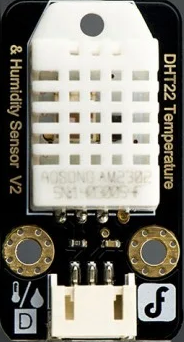
 Design with DFrobot DHT22 Temperature & Humidity Sensor V2 in Cirkit Designer
Design with DFrobot DHT22 Temperature & Humidity Sensor V2 in Cirkit DesignerIntroduction
The DFRobot DHT22 Temperature & Humidity Sensor V2 is a reliable sensor module capable of measuring both temperature and humidity with high accuracy. It utilizes the DHT22 sensor, which is known for its long-term stability and calibration. This sensor is widely used in various applications such as weather stations, home environment monitoring, HVAC systems, and any project where precise atmospheric conditions are needed.
Explore Projects Built with DFrobot DHT22 Temperature & Humidity Sensor V2
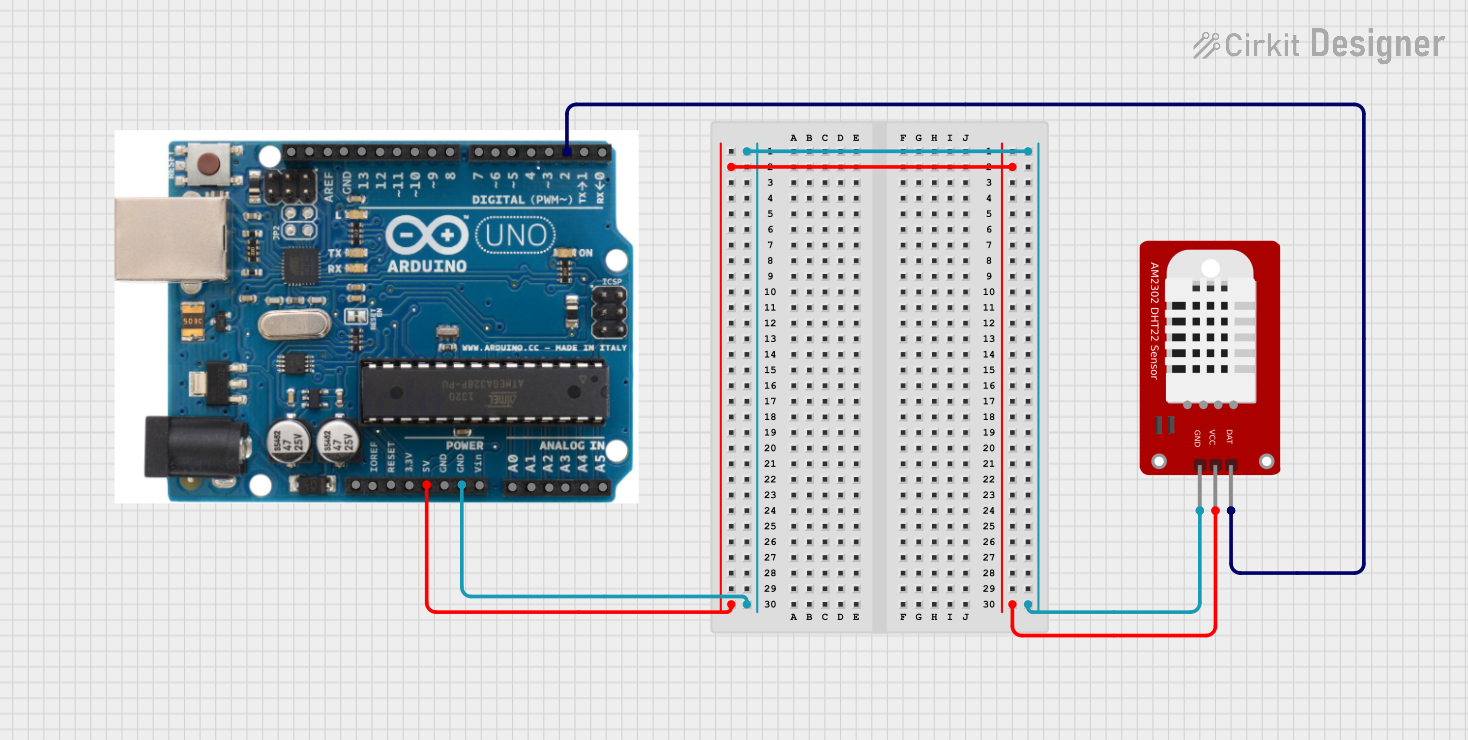
 Open Project in Cirkit Designer
Open Project in Cirkit Designer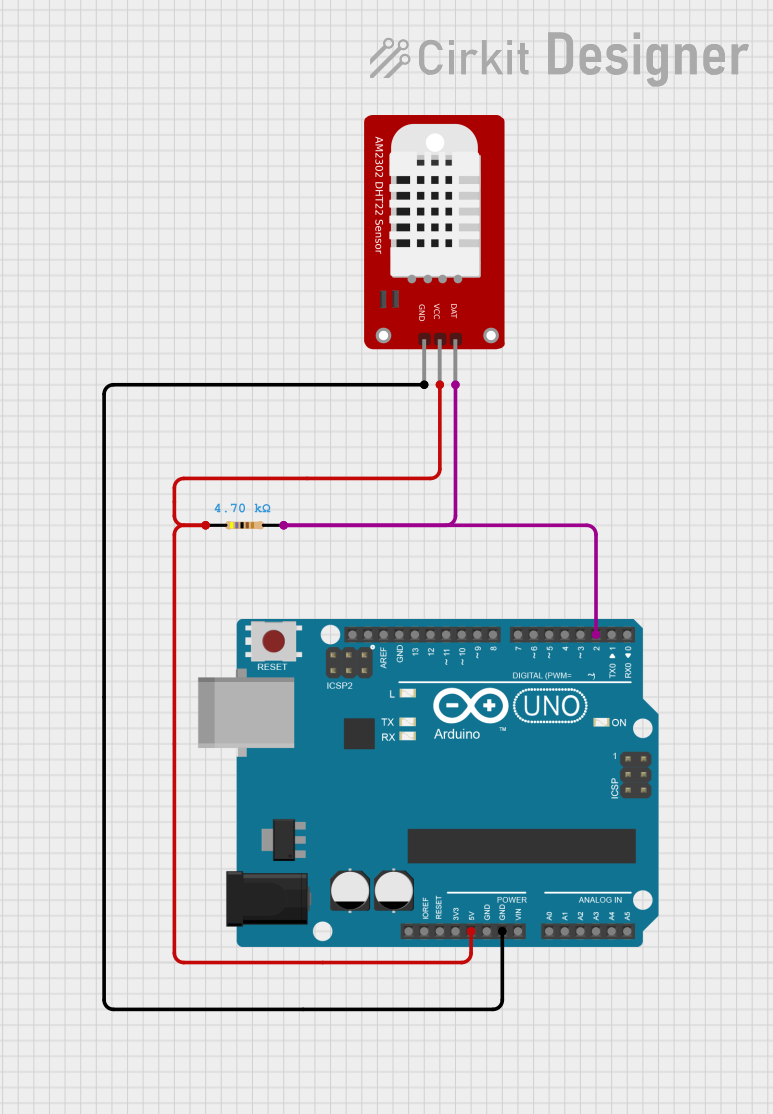
 Open Project in Cirkit Designer
Open Project in Cirkit Designer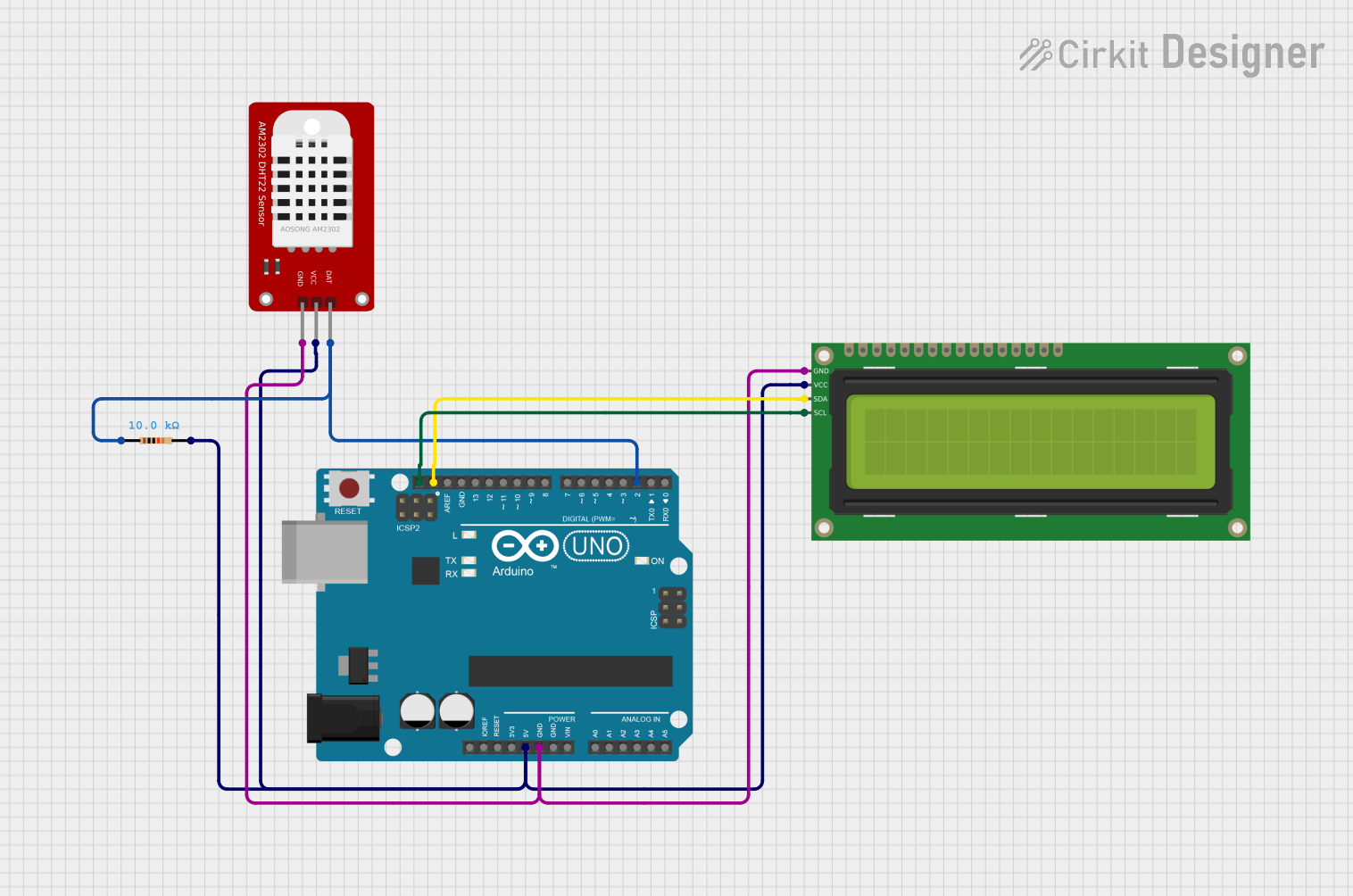
 Open Project in Cirkit Designer
Open Project in Cirkit Designer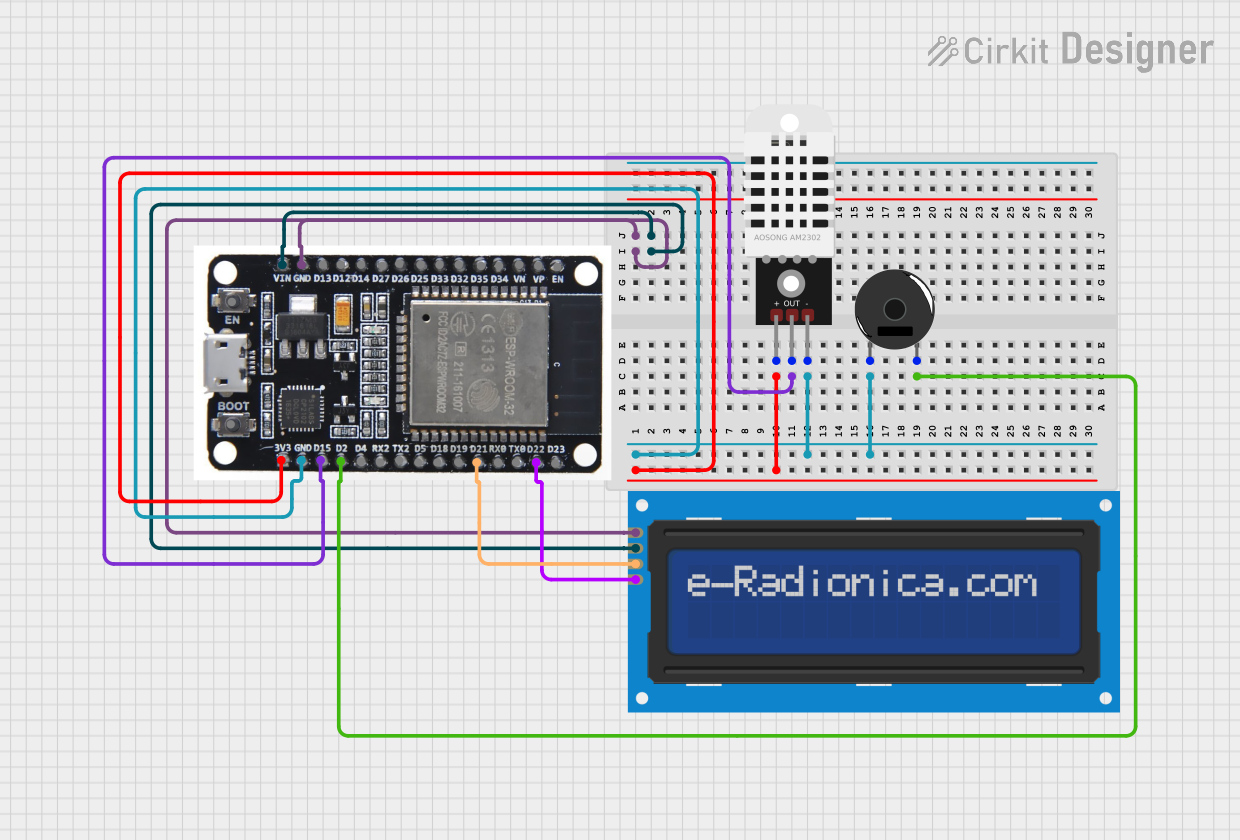
 Open Project in Cirkit Designer
Open Project in Cirkit DesignerExplore Projects Built with DFrobot DHT22 Temperature & Humidity Sensor V2

 Open Project in Cirkit Designer
Open Project in Cirkit Designer
 Open Project in Cirkit Designer
Open Project in Cirkit Designer
 Open Project in Cirkit Designer
Open Project in Cirkit Designer
 Open Project in Cirkit Designer
Open Project in Cirkit DesignerCommon Applications and Use Cases
- Home automation systems
- Weather monitoring stations
- Environmental data logging
- HVAC system monitoring
- Agricultural and soil monitoring
Technical Specifications
Key Technical Details
- Operating Voltage: 3.3 to 6V DC
- Output Signal: Digital signal via a single-bus
- Measuring Range:
- Humidity: 0-100% RH
- Temperature: -40°C to 80°C (-40°F to 176°F)
- Accuracy:
- Humidity: ±2% RH
- Temperature: ±0.5°C
- Resolution:
- Humidity: 0.1% RH
- Temperature: 0.1°C
- Sampling Rate: ≤ 2 seconds
Pin Configuration and Descriptions
| Pin Number | Name | Description |
|---|---|---|
| 1 | VCC | Power supply (3.3 to 6V DC) |
| 2 | DATA | Digital output signal |
| 3 | NC | Not connected |
| 4 | GND | Ground |
Usage Instructions
How to Use the Component in a Circuit
- Power Supply: Connect the VCC pin to a 3.3V or 5V supply from your microcontroller board.
- Data Signal: Connect the DATA pin to a digital I/O pin on your microcontroller.
- Ground: Connect the GND pin to the ground on your microcontroller board.
- Pull-up Resistor: A 5.1kΩ to 10kΩ pull-up resistor is typically required between the VCC and DATA pins.
Important Considerations and Best Practices
- Avoid placing the sensor in direct sunlight or near heat sources for accurate readings.
- Ensure the sensor is not exposed to condensing humidity levels.
- Allow the sensor to acclimate to the environment for accurate readings.
- Use shielded/filtered cables if the sensor is placed in an environment with high electromagnetic interference.
Example Code for Arduino UNO
#include "DHT.h"
#define DHTPIN 2 // Digital pin connected to the DHT sensor
#define DHTTYPE DHT22 // DHT 22 (AM2302)
DHT dht(DHTPIN, DHTTYPE);
void setup() {
Serial.begin(9600);
dht.begin();
}
void loop() {
// Wait a few seconds between measurements.
delay(2000);
// Reading temperature or humidity takes about 250 milliseconds!
float humidity = dht.readHumidity();
// Read temperature as Celsius (the default)
float temperature = dht.readTemperature();
// Check if any reads failed and exit early (to try again).
if (isnan(humidity) || isnan(temperature)) {
Serial.println(F("Failed to read from DHT sensor!"));
return;
}
// Compute heat index in Celsius (isFahrenheit = false)
float heatIndex = dht.computeHeatIndex(temperature, humidity, false);
Serial.print(F("Humidity: "));
Serial.print(humidity);
Serial.print(F("% Temperature: "));
Serial.print(temperature);
Serial.print(F("°C Heat index: "));
Serial.print(heatIndex);
Serial.println(F("°C"));
}
Troubleshooting and FAQs
Common Issues Users Might Face
- Inaccurate Readings: Ensure the sensor is not placed near heat sources or in direct sunlight.
- No Data: Check the wiring, especially the pull-up resistor on the data line.
- Erratic Readings: Ensure there's no condensation on the sensor and it's acclimated to the environment.
Solutions and Tips for Troubleshooting
- Sensor Not Responding: Verify the power supply and connections. Reset the microcontroller and try reading again.
- Consistently High Humidity Readings: Check for any moisture or condensation on the sensor and dry it gently if necessary.
- Long Cable Runs: Use shielded cables and keep the cable length as short as possible to minimize signal degradation.
FAQs
Q: Can the sensor be used outdoors? A: Yes, but it should be protected from direct sunlight, rain, and condensation.
Q: How long does the sensor need to acclimate to a new environment? A: It typically takes about 30 minutes to an hour for the sensor to stabilize and provide accurate readings.
Q: Is calibration required for the sensor? A: The DHT22 sensor comes pre-calibrated from the factory. However, for critical applications, periodic calibration against a known standard may be necessary.